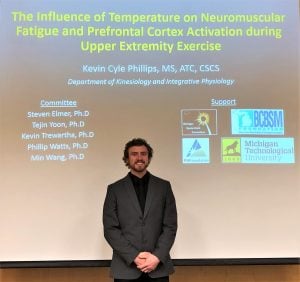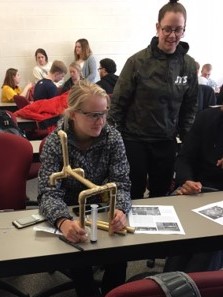
Kevin Phillips is the second student to graduate from Michigan Tech with a PhD in Integrative Physiology.
On April 1, 2019 Kevin successfully defended his dissertation: “The Influence of Temperature on Neuromuscular Fatigue and Prefrontal Cortex Activation During Upper Extremity Exercise” under the advisory of Dr. Steven Elmer.
Kevin Phillips was one of two students who transferred into the Integrative Physiology PhD program in its inaugural year (2017/18). The other student, Matthew Kilgas, defended his dissertation and graduated this past December.
“I’d like to thank Michigan Tech, the KIP Department, my dissertation committee, faculty and students for their support over the past four years,” says Phillips. “I have had a lot of fun and have grown significantly as a teacher and researcher throughout my time at Michigan Tech.”
Phillips completed his MS in Exercise Science at Northern Michigan University in 2015 and his BS in Athletic Training at Marywood University in Pennsylvania in 2012. Kevin is currently pursuing an Assistant Professor position in Exercise Science; he hopes to continue his research on the influence of temperature alterations on brain perception and regulation of fatiguing exercise.



